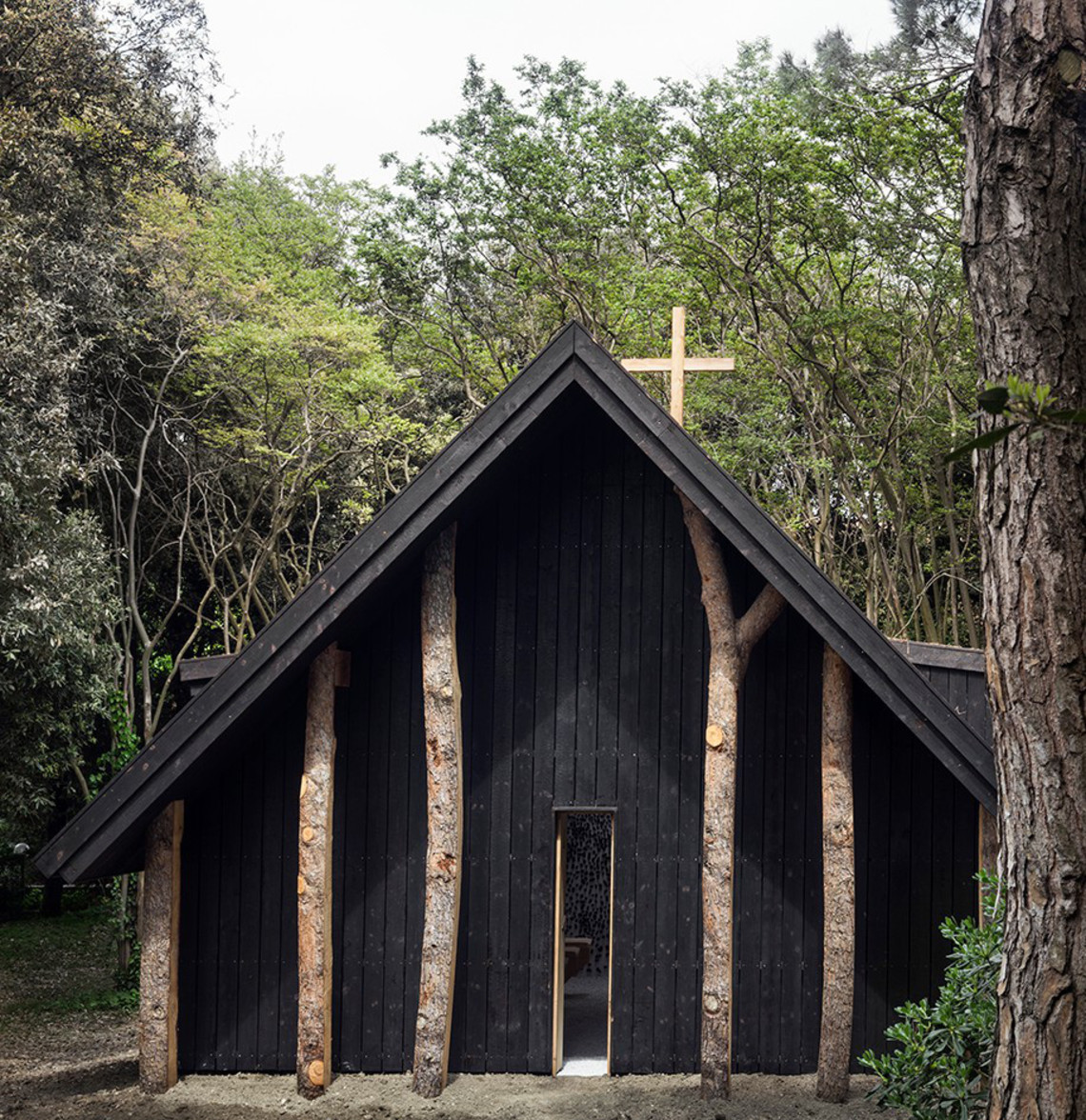For the first time, the Vatican has a pavilion at the Venice Architecture Biennial exhibition, featuring 10 chapels created by renowned architects.
Lenten Campaign 2025
This content is free of charge, as are all our articles.
Support us with a donation that is tax-deductible and enable us to continue to reach millions of readers.
Until November, the Vatican will have its own pavilion at Venice’s 16th International Biennale of Architecture. Its goal? To deepen a dialogue between contemporary architecture and spirituality, between the visible and the invisible. A two-hectare plot of land on St. George’s Island, designed as a garden of reflection, will hold 10 chapels inspired by Gunnar Asplund’s Chapel in the Woods. The 10 internationally renowned architects who contributed to the exhibition include Britain’s Norman Foster and the Portuguese Eduardo Souto de Moura.
To start the slideshow, click on the first image:
Start the slideshow:
TERUNOBU FUJIMORI: THE CHAPEL AND THE CROSS.
Perhaps the most concrete structure of the exhibition is this relatively classical chapel with a wooden cross in the style of this famous Japanese architect. Four columns of raw wood adorn an entrance consisting of a narrow door.
Pontifical Council for Culture
TERUNOBU FUJIMORI: THE CHAPEL AND THE CROSS.
The building contains a refined room furnished with Japanese wooden benches, white walls, and a pebbled floor. Two beams at the far end of the room form a cross covered with golden mosaics to symbolize the Resurrection.
Pontifical Council for Culture
FRANCESCO CELLINI: A CONSTRUCTED REFLECTION.
The Italian architect, a non-believer but “respectful” of the Catholic spiritual tradition, did not work on the project of a chapel but of a symbol, an open space articulated around an ambo and the Book.
Pontifical Council for Culture
FRANCESCO CELLINI: A CONSTRUCTED REFLECTION.
The building is not designed to accommodate an assembly but simply to invite the passer-by to stop and meditate on holiness and miracles.
Pontifical Council for Culture
ANDREW BERMAN: AN INDEFINITE PRESENCE IN THE LANDSCAPE. The New York architect chose materials contrasting with nature, easily spotted to provide a landmark.
Pontifical Council for Culture
ANDREW BERMAN: AN INDEFINITE PRESENCE IN THE LANDSCAPE. This chapel offers a portico conceived as a meeting place, from which we can observe nature.
Pontifical Council for Culture
SEAN GODSELL: AN IDENTITY CAPABLE OF SURVIVING.
Simple and made with solid materials, this chapel, which can be deployed in any circumstance and in any weather, consists of an altar covered with a skylight.
Pontifical Council for Culture
SEAN GODSELL: AN IDENTITY CAPABLE OF SURVIVING.
The architect raised by the Jesuits imagined an easily transportable building, dedicated in the first place to the mission.
Pontifical Council for Culture
JAVIER CORVALAN: A NOMADIC CHAPEL.
Here, a cylinder resting on a tripod holds a three-dimensional cross in the center. If the ground shakes or the wind blows, the cylinder moves, explains the Paraguayan architect. The sphere contains a true sanctuary, and expresses the protection we find near the Cross.
Pontifical Council for Culture
JAVIER CORVALAN: A NOMADIC CHAPEL.
Even under other skies, in the midst of other environments, this nomadic chapel would offer a space conducive to inner peace.
Pontifical Council for Culture
NORMAN FOSTER: THE CROSS MADE WITH “TENSEGRITY”
This installation presents three wooden crosses, like those of Golgotha.
Pontifical Council for Culture
NORMAN FOSTER: THE CROSS MADE WITH “TENSEGRITY”
Its particularity lies in the fact that they are built with tensegrity, that is to say, each constitutive beam is not connected to the others, but is held by cables that make up the rigid structure. The enclosure made of wood gives the whole a sacred aspect.
Pontifical Council for Culture
CARLA JUAÇABA: THE BENCH AT THE FOOT OF THE CROSS.
This installation is summed up in a metal structure consisting of a bench and a crucifix. However, it seeks to be a real sanctuary — ultra-minimalist, certainly — but conducive to the contemplation of the Cross.
Pontifical Council for Culture
CARLA JUAÇABA: THE BENCH AT THE FOOT OF THE CROSS.
Made of stainless steel, the elements reflect the surrounding environment, almost giving the impression of disappearing.
Pontifical Council for Culture
RICARDO FLORES AND EVA PRATS: THE MORNING CHAPEL.
The building, located on the far eastern side of St. George’s Island, was designed to capture the first rays of the day’s sun. The chapel offers a belvedere at the top of a few steps.
Pontifical Council for Culture
RICARDO FLORES AND EVA PRATS: THE CHAPEL OF THE MORNING.
The chapel is like a wall parallel to a walking path. Just crossing it makes you “change your pace, change your breathing,” says its author. Its general structure was inspired by the ancient ruins but also the famous “open chapels” of Mexico.
Pontifical Council for Culture
SMILJAN RADIC: A CHAPEL LIKE A VOTIVE NICHE.
The architect wanted to create an isolated place, calling for intimacy and introspection, but not confined, so as to avoid any austerity whatsoever. This is the reason why the circular wall is topped with a simple translucent glass, letting in the light.
Pontifical Council for Culture
SMILJAN RADIC: A CHAPEL LIKE A VOTIVE NICHE.
This tiny chapel is inspired by the multitude of votive niches in small religious and popular places that dot the deserts, countryside, or mountains.
Pontifical Council for Culture
EDUARDO SOUTO DE MOURA: THE TOMB OF STONE.
Neither a chapel nor a sanctuary, this installation feels like a tomb.
Pontifical Council for Culture
EDUARDO SOUTO DE MOURA: THE TOMB OF STONE.
Made up of huge stones, it contains only an altar placed on clay. It is a perfect place to pray “with your feet on the ground and your head in your hands,” says its designer.
Pontifical Council for Culture









